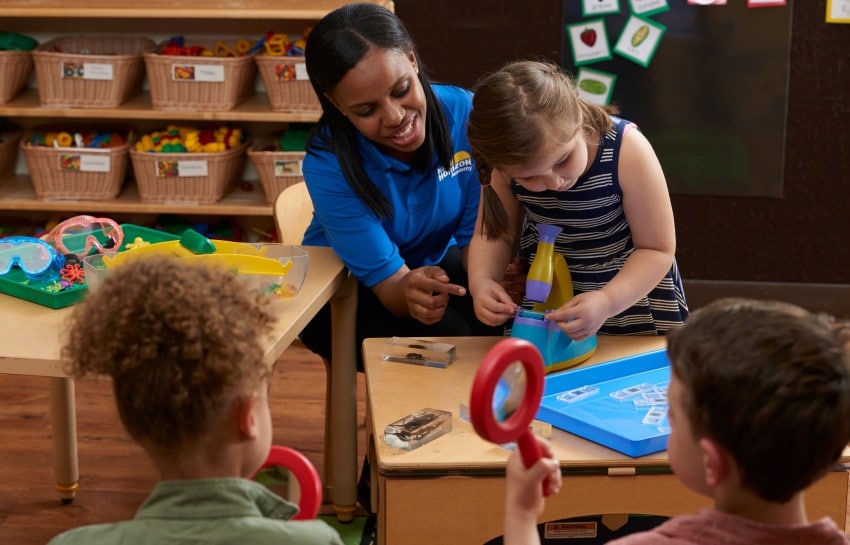Steam is important in early childhood education as it promotes creativity and critical thinking skills. It also encourages hands-on learning and fosters an early interest in science, technology, engineering, art, and math.
Introducing Steam in early childhood education cultivates a foundation for problem-solving and innovation, preparing children for future success in a rapidly changing world. By engaging in Steam activities, young learners are encouraged to explore, question, and experiment, which enhances their cognitive development and nurtures their curiosity, resilience, and adaptability.
In addition, Steam education helps develop essential skills such as communication, collaboration, and perseverance. Incorporating Steam into early childhood education empowers children to become lifelong learners and prepares them for the challenges of the 21st century.
1. The Role Of Steam In Early Childhood Development
Steam Education And Its Impact On Young Learners
Early childhood education plays a crucial role in laying the foundation for a child’s future success. Incorporating Steam activities (Science, Technology, Engineering, Arts, and Mathematics) into the curriculum can greatly enhance the learning experience for young learners.
One of the key benefits of integrating Steam into early childhood education is that it promotes critical thinking and problem-solving skills. Through hands-on activities, children learn to explore, experiment, and find solutions to real-world challenges, fostering their creativity and innovation. Steam also encourages collaboration and communication, as children work in teams to complete projects and share their ideas.
Furthermore, Steam enables children to develop a strong foundation in science, technology, engineering, arts, and mathematics, equipping them with the essential skills needed in today’s rapidly evolving world. By engaging in artistic and design-focused activities, children can also enhance their critical observation and creative expression, allowing them to think outside the box.
Incorporating Steam into early childhood education has a lasting impact on young learners, preparing them to become adaptable, innovative, and well-rounded individuals for the future.
2. Building A Foundation For Future Success
Steam, which stands for Science, Technology, Engineering, Art, and Mathematics, is becoming increasingly important in early childhood education. Fostering critical thinking and problem-solving skills is one of the key benefits of incorporating steam activities into the curriculum. By engaging in hands-on projects and experiments, young children are encouraged to think critically and find innovative solutions to problems. This process not only enhances their problem-solving abilities but also strengthens their analytical skills, logical reasoning, and decision-making capabilities.
Moreover, steam activities foster creativity and innovation in young minds. By combining different disciplines and encouraging experimentation, children develop a deeper understanding of the world around them. They are encouraged to think outside the box, explore possibilities, and come up with unique ideas. This promotes their creativity, imagination, and innovation, skills that are essential in the rapidly evolving and increasingly competitive world.
3. Nurturing A Love For Learning
htmlWhy is Steam Important in Early Childhood Education
3. Nurturing a Love for Learning
Making learning fun and engaging with steam activities
Steam activities in early childhood education can greatly foster a love for learning and create engaging experiences for young children. By incorporating science, technology, engineering, arts, and mathematics into their curriculum, educators can provide a well-rounded education that stimulates curiosity and creativity. Steam activities encourage hands-on exploration, problem-solving skills, and critical thinking, allowing children to apply concepts in a practical context. This approach empowers children to become active participants in their own learning journey. Exploring various steam disciplines exposes children to a wide range of subjects at an early age, encouraging them to develop varied interests and passions. Moreover, steam activities enhance collaboration and communication skills by enabling children to work together and express their ideas. Ultimately, early exposure to steam disciplines fosters not only a love for learning but also sets a strong foundation for future educational and career pathways.
4. Collaboration And Social Skills Development
Collaboration and social skills development are key aspects of early childhood education. Through steam projects, children are given opportunities to work together, fostering teamwork and collaboration. These activities encourage kids to communicate and express their ideas, helping them develop vital social skills at an early age.
Steam activities often involve group work, where children work together towards a common goal. This promotes collaboration and teaches children the importance of teamwork. They learn how to communicate their thoughts and ideas effectively, listen to others, and solve problems together.
Furthermore, steam projects provide a platform for children to interact with their peers, fostering the development of social skills. Working together in a group setting allows them to develop empathy, understanding, and respect for others. They learn to appreciate diverse perspectives and build relationships with their peers.
In conclusion, promoting collaboration and social skills through steam projects plays a crucial role in early childhood education. These activities provide children with the necessary tools to communicate effectively, work together, and develop important social skills.
5. Bridging The Gap Between Classroom And Real-world
Preparing young learners for future careers through steam education helps in connecting steam concepts to real-life applications for early childhood education. By integrating steam activities into early childhood classrooms, children are exposed to hands-on experiences that promote critical thinking, problem-solving, and creativity. These experiences allow children to explore and understand how steam concepts are relevant in the real world.
Through steam education, young learners engage in activities that encourage them to think like scientists, engineers, and artists. They learn to collaborate, communicate their ideas, and develop skills that are essential for future careers. By bridging the gap between classroom learning and the real-world, steam education prepares children to become innovative thinkers who can apply their knowledge and skills to solve real-world problems.

Credit: www.newhorizonacademy.net
6. The Role Of Parents And Educators In Supporting Steam Education
In early childhood education, Steam (Science, Technology, Engineering, Arts, and Mathematics) plays a vital role in promoting holistic development and equipping children with essential skills for the future. Parents and educators have a crucial role in supporting Steam education and fostering collaboration between them is key.
Parents can support Steam learning by creating a home environment that encourages exploration, questioning, and hands-on experiences. They can engage in dialogue with their children, encouraging them to think critically, solve problems, and explore their interests.
Educators, on the other hand, can integrate Steam into the curricula by designing play-based activities that incorporate scientific inquiry, engineering challenges, artistic expression, and mathematical problem-solving. They can also provide professional development opportunities for parents to enhance their understanding of Steam concepts and their role in promoting learning at home.
Collaboration between parents and educators can take various forms, such as workshops, parent-teacher conferences, and home-school partnerships. By sharing ideas, experiences, and resources, they can create a cohesive learning environment that extends beyond the confines of the classroom.
Ultimately, the active involvement of parents and educators in supporting Steam education sets the foundation for children’s continued growth and success in an increasingly technological and innovative world.
7. Resources And Strategies For Implementing Steam In Early Childhood Education
Implementing STEAM (Science, Technology, Engineering, Arts, and Mathematics) in early childhood education is crucial for cultivating young minds. By incorporating STEAM activities and materials, educators can foster curiosity, critical thinking, and problem-solving skills in young children. Here are some recommended resources and strategies to seamlessly integrate STEAM into the classroom:
| Recommended STEAM Activities | Recommended STEAM Materials |
|---|---|
|
|
Strategies for educators to incorporate STEAM into their teaching practices:
- Integrate STEAM across different subject areas
- Encourage open-ended exploration and problem-solving
- Provide hands-on experiences and experiments
- Facilitate group collaborations and discussions
- Use technology and digital tools for interactive learning
By implementing these resources and strategies, educators can create a stimulating learning environment that nurtures a love for STEAM in young children. Start exploring the world of STEAM in early childhood education today!
Conclusion
To conclude, embracing STEAM in early childhood education is imperative for fostering holistic learning experiences. By integrating science, technology, engineering, arts, and mathematics into the curriculum, children are encouraged to explore, experiment, and problem-solve in real-world contexts. This approach not only enhances their critical thinking, creativity, and collaboration skills but also prepares them for future careers in an increasingly technological world.
Incorporating STEAM education sets the foundation for lifelong learning and ignites a passion for knowledge, ensuring a brighter future for the next generation.







